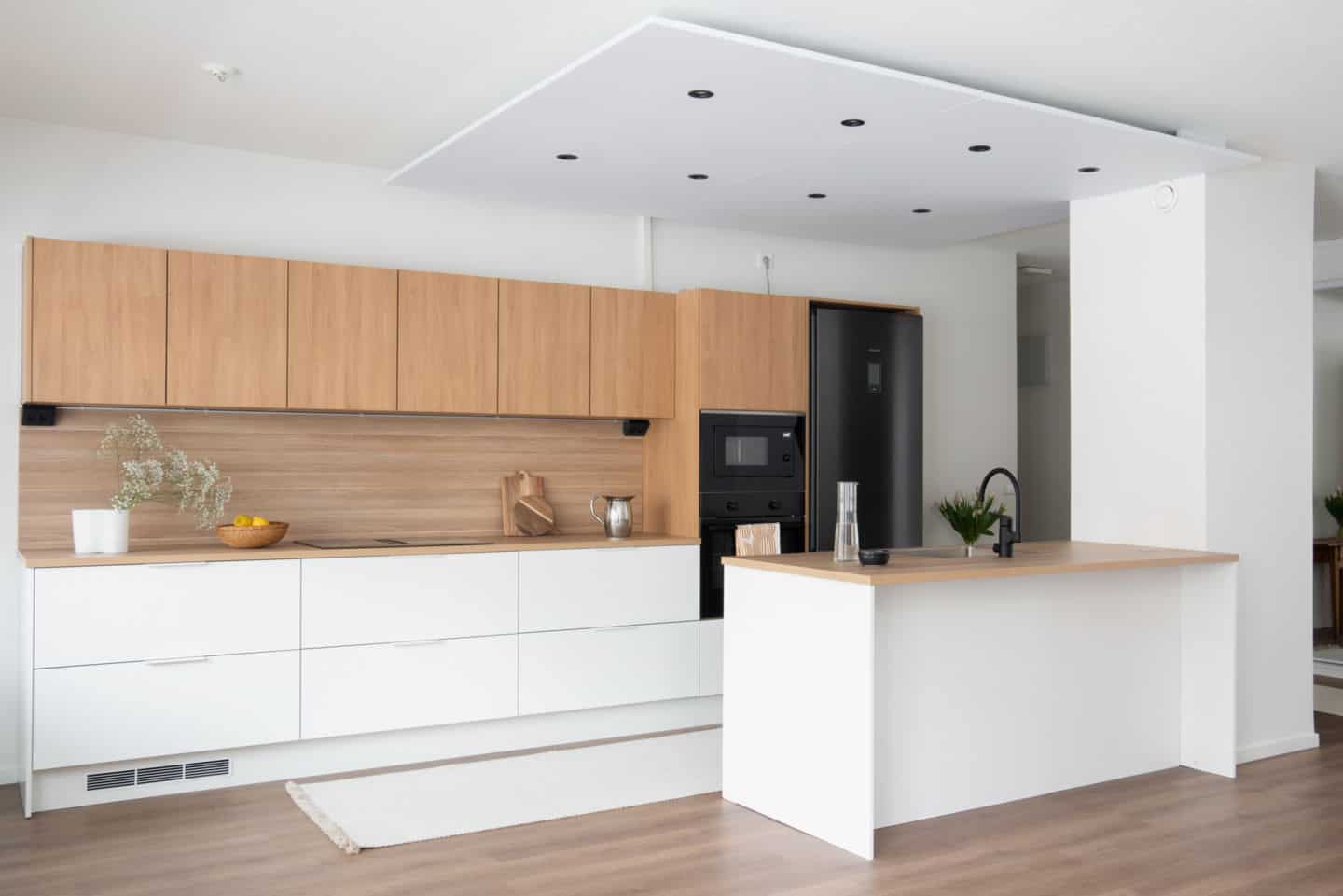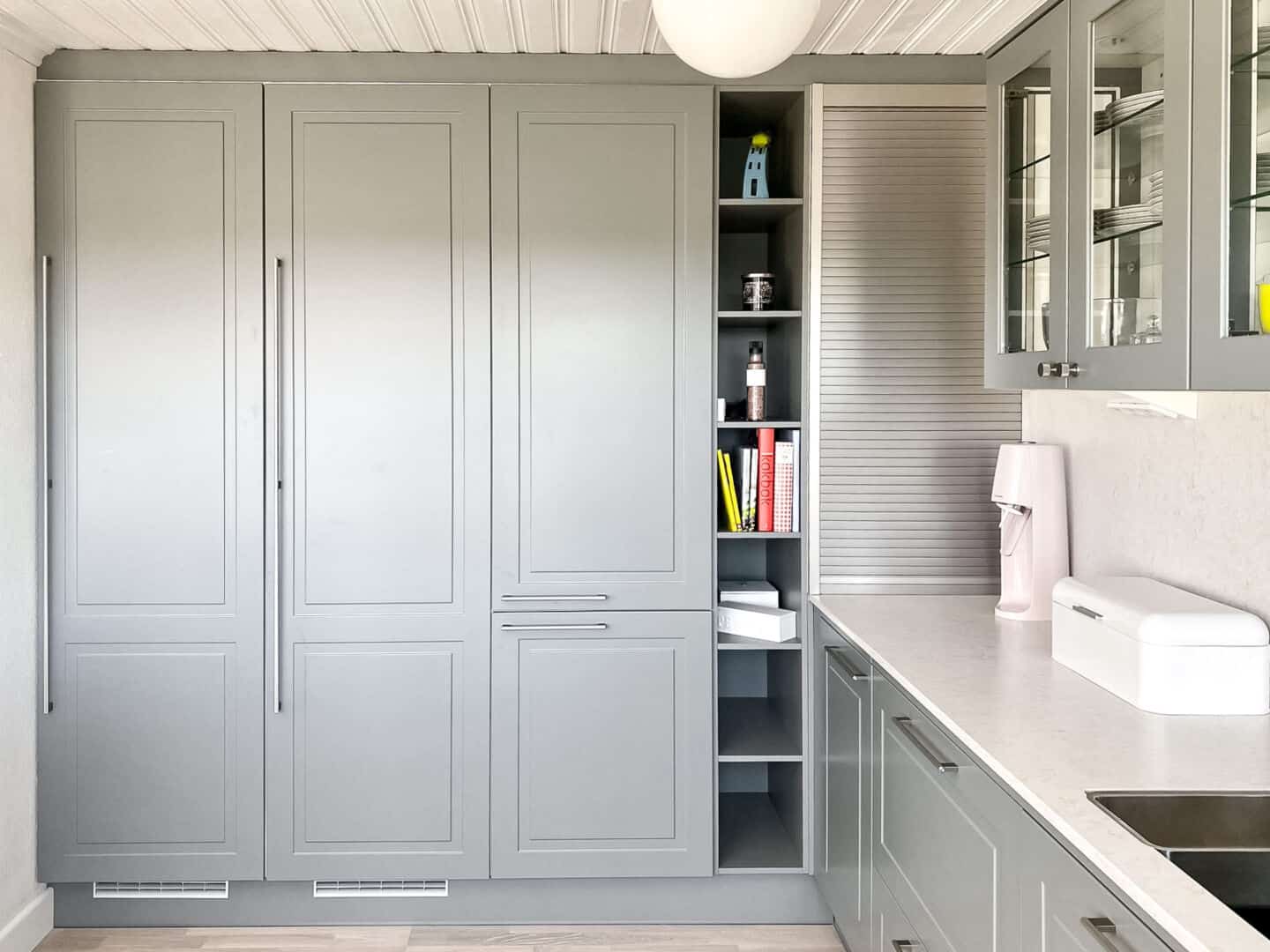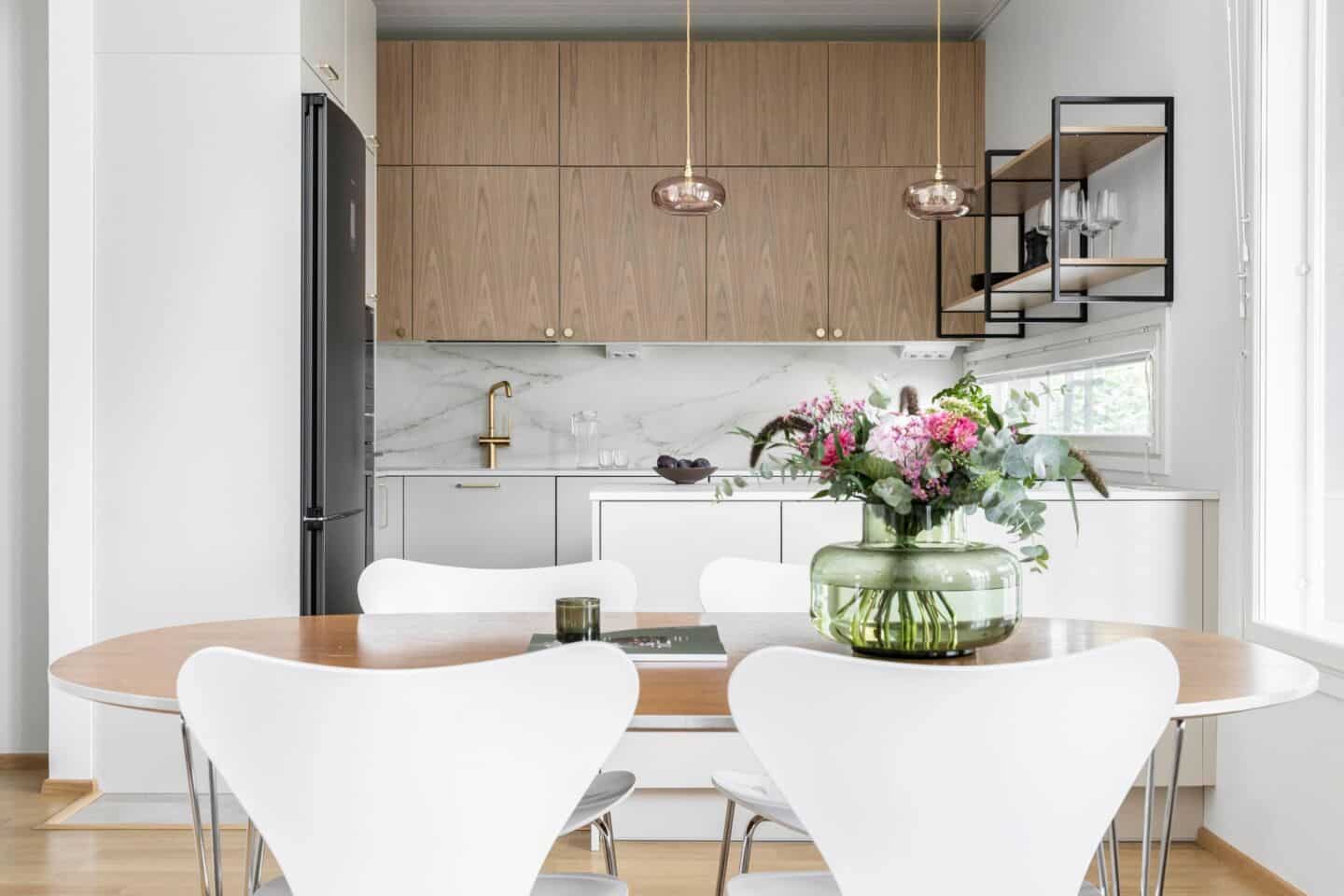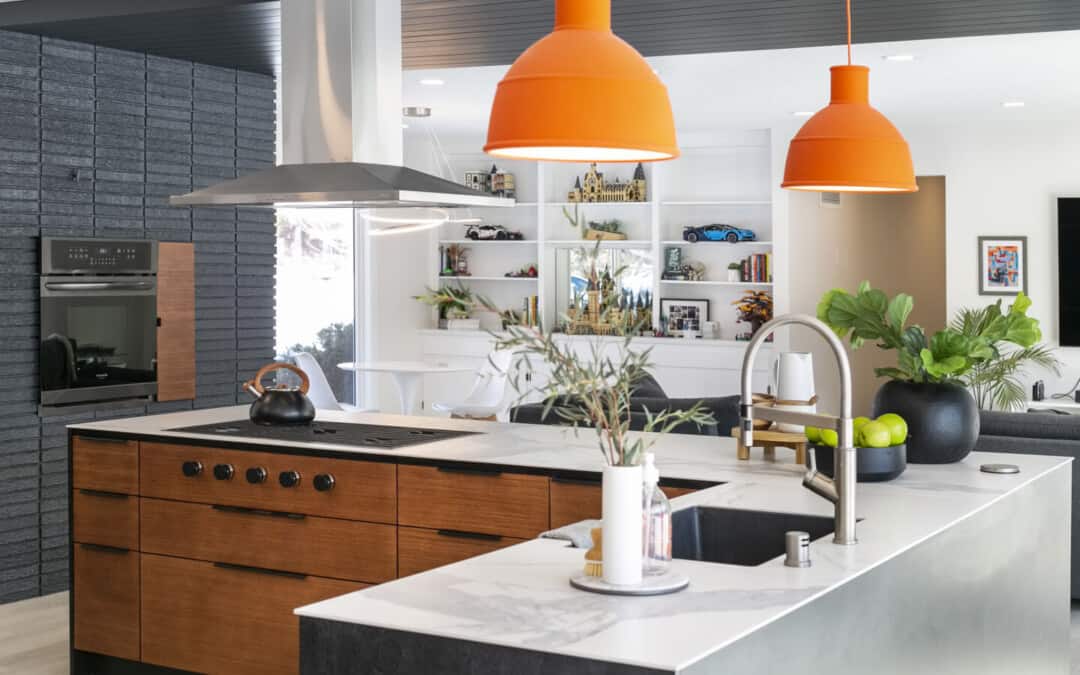Table of Contents
Trying to find the best non-toxic kitchen cabinets for your home?
Many people are turning to safer, cleaner products in their home—from makeup and skincare to cleaning products and food. And this consciousness over what we put in and around our bodies is slowly making its way into the world of interior design.
Off-gassing has become a big topic in home renovation and design circles, as many construction materials and furnishings have been found to slowly release potentially hazardous chemicals known as volatile organic compounds, or VOCs.
What are Volatile Organic Compounds?
According to the United States Environmental Protection Agency, VOCs “are emitted as gasses from certain solids or liquids. VOCs include a variety of chemicals, some of which may have short- and long-term adverse health effects.” Since VOCs are commonly found in paints, cleaning supplies, building materials, flooring, and furnishings (among many other things), it makes sense that VOC concentrations can be up to 10 times higher indoors than outdoors.
Common symptoms of VOC exposure include:
- Eye, nose, and throat irritation
- Shortness of breath
- Fatigue
- Nausea
- Headaches
- Rashes and skin issues
- Dizziness
Long-term exposure to high concentrations of VOCs can cause more serious issues, including:
- Lung irritation
- Liver damage
- Kidney damage
- Central nervous system damage
- Cancer
To protect your health, it’s important to limit your exposure to products and materials that contain VOCs. It may seem overwhelming, but it is possible to build or update your home to be more non-toxic. And a great place to start (or continue) your non-toxic journey is in your kitchen.

The Issue With Conventional Cabinets
Conventional stock cabinets and mass-produced kitchen cabinets, along with other building materials commonly found in kitchens, tend to have higher levels of VOCs. Most low and mid-range cabinet brands construct their cabinets with medium-density fiberboard (MDF), particleboard, or chipboard. Cabinets made of these materials involve pieces that have to be glued together—and that cabinet glue often contains formaldehyde. As it happens, formaldehyde is one of the most common VOCs.
In the days and weeks after you install these cabinets, the formaldehyde off-gasses into your home, lingering in the air and greatly affecting the indoor air quality. This is what some people consider that “new” smell that cabinetry or carpets have. (Though not all VOCs have a noticeable scent!). While exposure to VOC off-gassing impacts every person differently, people with asthma, eczema, or otherwise weakened immune systems are especially vulnerable to the side effects caused by VOCs in conventional cabinets.
That may feel like a lot of bad news. But here’s the good news: there are other options out there! It is possible to design a kitchen using cabinet manufacturers that prioritize non-toxic, low VOC kitchen cabinets.
The Many Benefits of “Green” Kitchen Cabinets
If you want a greener option, opt for non-toxic, environmentally friendly kitchen cabinets. These cabinets are ethically and sustainably sourced and manufactured to contain none of the harmful VOCs and off-gassing that are present in conventional cabinets. Not only that, but when you choose non-toxic, or “green” kitchen cabinets from a brand like Puustelli Kitchens, you get benefits that include:
- High-quality, sustainable materials (no MDF or chipboard)
- Formaldehyde-free glues
- No or low-VOC paints and varnishes
- No endangered wood species
- 100% recyclable biocomposite frames
- Top indoor air quality rating
Many readily available semi-custom cabinets claim to be non-toxic, and they are often no better than stock cabinets. However, the only way you can guarantee getting 100% formaldehyde-free kitchen cabinets is to source cabinetry from a certified eco-friendly cabinetry manufacturer.

4 Non-Toxic Kitchen Cabinet Materials
When searching for non-toxic cabinets, you want to find materials with no or low formaldehyde emissions. There are four primary kitchen cabinet materials to turn to when looking for low-VOC cabinets.
1. CARB Compliant Non-Toxic Composite Wood
It can be difficult to completely avoid composite wood materials, especially if you’re designing a kitchen on a budget. Even some high-end products utilize engineered wood. However, you can find composite wood that incorporates little to no formaldehyde. Look for wood composite materials that meet the California Air Resources Board (CARB) standard for low formaldehyde emissions. These products will be labeled “California Phase 2 Compliant.”
You can also look for labels like:
ULEF: “Ultra-low emitting formaldehyde”
NAF: “No added formaldehyde”
2. Natural, Solid Wood without toxic stain treatments
One of the best non-toxic cabinet materials—not to mention the most beautiful and timeless—is natural solid wood. Consider the toxicity of stains and finishes when selecting cabinetry, and look for natural wood options that are finished with natural oils or water-soluble stains and varnishes. Some common types of natural wood cabinets include:
- Oak
- Pine
- Maple
- Hickory
- Birch
3. Reclaimed Wood
Reclaimed wood is a cabinet option that is very environmentally friendly. Reusing salvaged wood can make for a stunning eco-conscious kitchen because you can recycle existing materials instead of creating more products. Like solid wood, reclaimed wood is also visually striking, often lending a rustic or traditional look to a kitchen.
4. Bamboo
Bamboo is a very eco-friendly, non-toxic cabinet material that’s growing in popularity. Since bamboo is technically a type of grass, not a tree, it grows very quickly, making it much easier and more ethical to harvest. Bamboo has a modern look and is incredibly durable, making it perfect for kitchen cabinetry. The only potential drawback of bamboo is that it can be quite expensive, since it isn’t as readily available in kitchen cabinet designs as other materials.

Where You Can Find Non-Toxic Cabinets
Non-toxic cabinets are a great option for both remodels and new builds. At Puustelli, we’ve applied more than 100 years of Scandinavian kitchen cabinetry know-how to develop non-toxic kitchen cabinets with a top indoor air rating that help you feel more at ease in your new kitchen.
Puustelli cabinets are made without MDF, particleboard and chipboard, and they contain no formaldehyde, toxic solvents or stains.
Our non-toxic cabinets are also completely customizable, so you can have the look and feel of the kitchen of your dreams. With Puustelli cabinets, you can feel confident taking another step towards keeping your family and the environment healthy.
Ready to learn more about Puustelli cabinetry? Contact our team to learn more about our non-toxic cabinets and set up a free consultation at our Edina, Minnesota showroom location.

